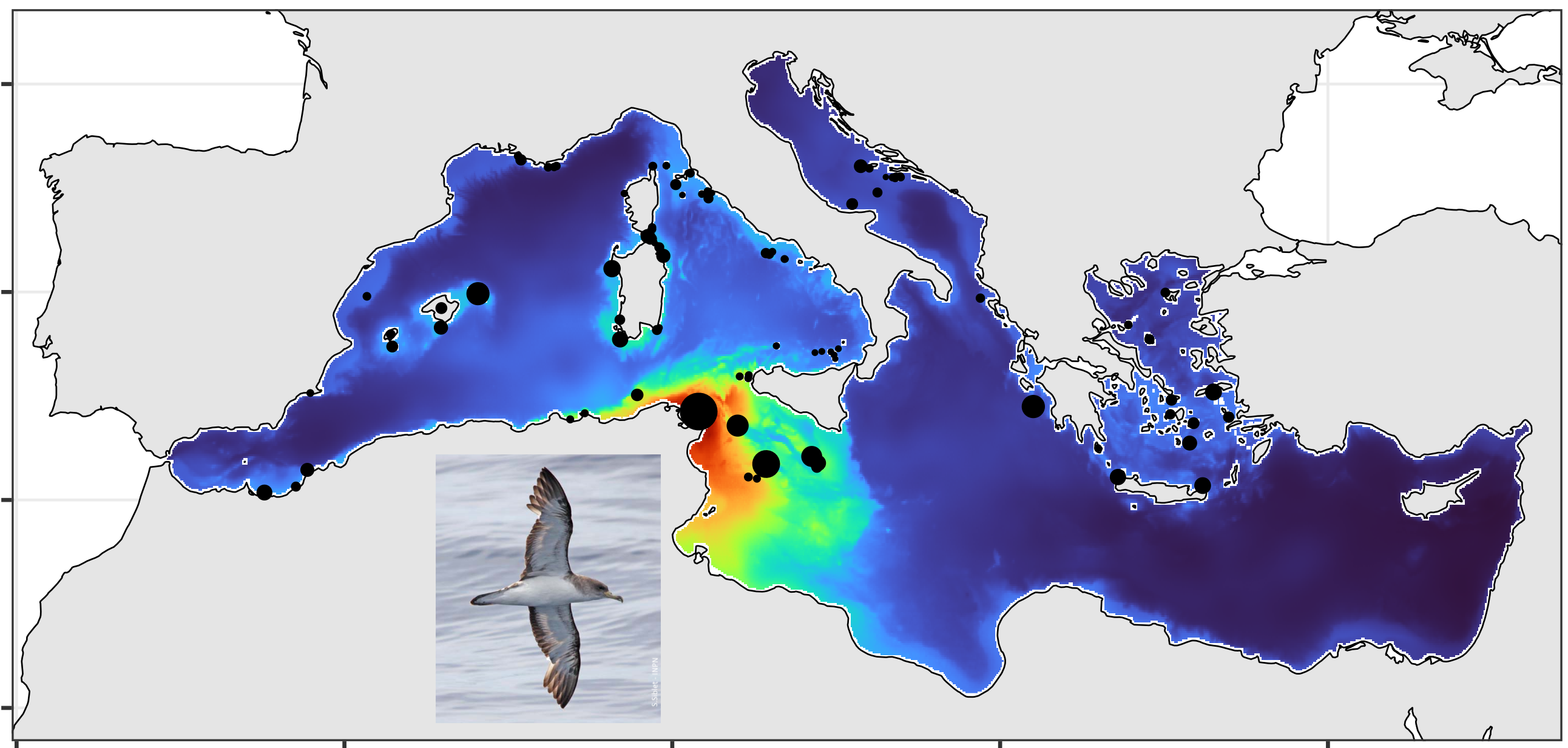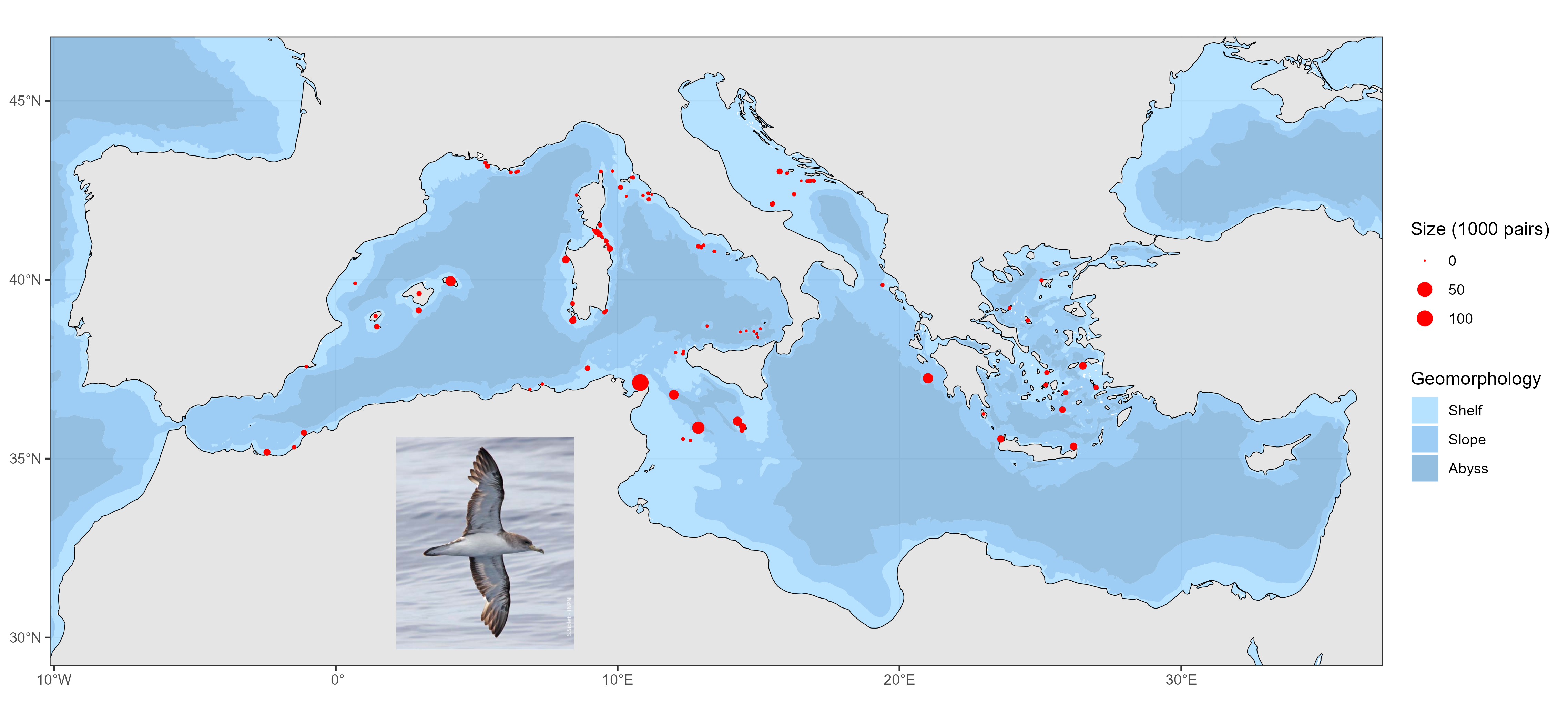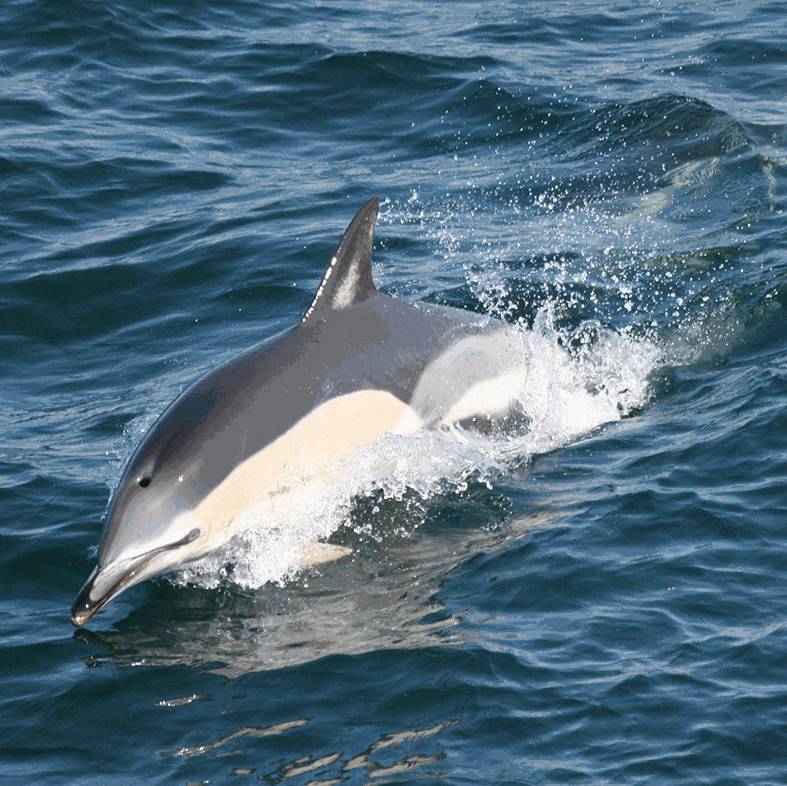Marine turtles, birds, mammals
Type of resources
Available actions
Topics
Keywords
Contact for the resource
Provided by
Years
Formats
Representation types
-

Distribution of Scopoli's shearwater (Calonectris diomedea) in the Mediterranean Sea during the summer season Distance sampling surveys are extensively used to estimate the abundance of wide-ranging species but are prone to detection biases. This may be particularly acute for strip-transect protocols, which assume perfect detection. We examined this assumption by quantifying the detection probability of a declining seabird (Scopoli’s shearwater, Calonectris diomedea), with particular attention to time-of-day and observation conditions at sea. We found detection probability was negatively affected by sun glare but positively by cloud cover and considerably dropped during mid-day hours due to circadian changes in behaviour (reduced detectability while resting). This result urges for systematically assessing and correcting detection bias when using strip-transect data to derive abundance information. Here, we did so by building a detection-corrected presence-absence ensemble model and combining it with a compilation of colony sizes and locations. A Monte-Carlo simulation ensured uncertainty propagation within and across data sources. The corrected abundance map showed shearwaters were largely prevalent in the central Mediterranean, Tunisia hosting most of the population both at sea and at colonies (45% of the global population; 79% of breeding pairs). This first accurate map is an essential conservation tool, emphasizing the importance of transnational actions for such species, that know no political boundaries.
-

Geolocations of Scopoli's shearwater (Calonectris diomedea) breeding colonies in the Mediterranean Sea. Distance sampling surveys are extensively used to estimate the abundance of wide-ranging species but are prone to detection biases. This may be particularly acute for strip-transect protocols, which assume perfect detection. We examined this assumption by quantifying the detection probability of a declining seabird (Scopoli’s shearwater, Calonectris diomedea), with particular attention to time-of-day and observation conditions at sea. We found detection probability was negatively affected by sun glare but positively by cloud cover and considerably dropped during mid-day hours due to circadian changes in behaviour (reduced detectability while resting). This result urges for systematically assessing and correcting detection bias when using strip-transect data to derive abundance information. Here, we did so by building a detection-corrected presence-absence ensemble model and combining it with a compilation of colony sizes and locations. A Monte-Carlo simulation ensured uncertainty propagation within and across data sources. The corrected abundance map showed shearwaters were largely prevalent in the central Mediterranean, Tunisia hosting most of the population both at sea and at colonies (45% of the global population; 79% of breeding pairs). This first accurate map is an essential conservation tool, emphasizing the importance of transnational actions for such species, that know no political boundaries.
-

Cetaceans adjust their distribution and abundance to encountered conditions across years and seasons, but we poorly understand such small-scale changes for many species, especially in winter. Crucial challenges yet weight on some populations during this season, such as the high levels of fisheries-induced mortality faced by the common dolphin (Delphinus delphis) in the North-East Atlantic shelves. For such species, comprehend the winter fine-scale dynamics is crucial. We aimed at identifying the dolphin distribution drivers within the winters 2020 and 2021, with a focus on determining the lag between changes in oceanographic conditions and in dolphin distribution. They were related with temporal delays specific to the nature and the cascading effects oceanographic processes had on the trophic chain. By determining the most important conditions and lags to dolphin distributions, we shed light on the yet poorly understood intrusions of dolphins within coastal waters during winter: they displayed a strong preference for the coastal-shelf waters front and extensively followed its spatial variations, their overall densities increasing over the period and peaking in March-April. The results presented here provided invaluable information on the winter distribution dynamics and should inform management decisions to help reducing the unsustainable mortalities of this species in fisheries by-catch.
-

Tracking data of 7 grey seals were obtained from the deployment of Fastloc GPS/GSM tags developed by the Sea Mammal Research Unit (UK). Full tag description is available at: http://www.smru.st-andrews.ac.uk/Instrumentation/GPSPhoneTag/. The tags include a wet-dry sensor from which haulout events are recorded, a pressure sensor providing detailed dive data, as well as a Fastloc GPS recording irregular locations when the seal is not underwater. Data is stored onboard and transmitted via the GSM network when the seal is in the reception range. The data provided here are the individual GPS locations of the seals fitted with these tags for an average duration of 135 days.
-

The willingness to pay (WTP) of people to protect animal populations can be used as a tool for these populations’ conservation. The WTP reflects the non-use value of animals, which can be significant for charismatic species. This value can be used as an economic criterion for decision-makers in order to recommend protective measures. The definition of the WTP to protect a species is challenging, as valuation methods are time-consuming and expensive. To overcome these limitations, we built a benefit transfer function based on 112 valuation studies and apply it to 440 Mediterranean marine species. We extracted these species from the IUCN database and retrieved some required parameters from, amongst others, the FishBase database. Marine mammals appear to have the highest WTP value followed in order by sea turtles, sharks and rays, and ray-finned fishes. Commercial fish species appear to have the highest values amongst the fish class.
 Catalogue PIGMA
Catalogue PIGMA